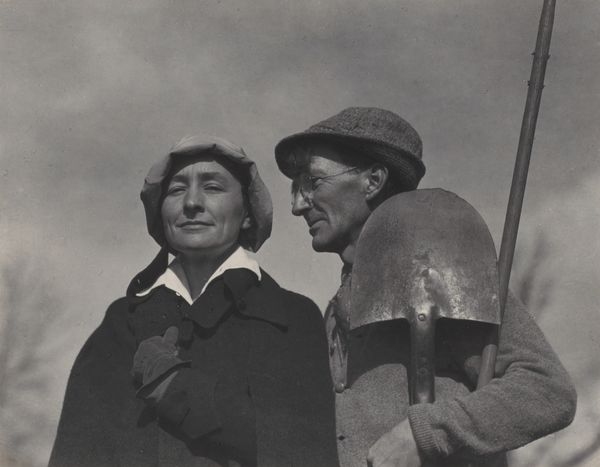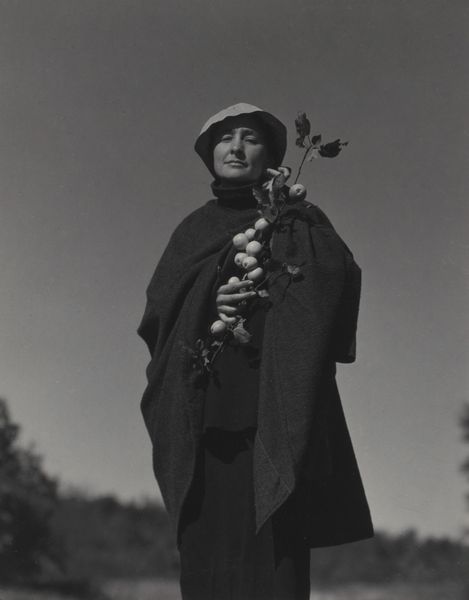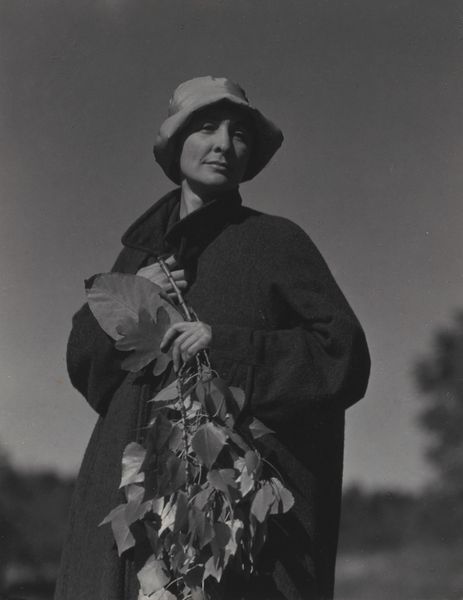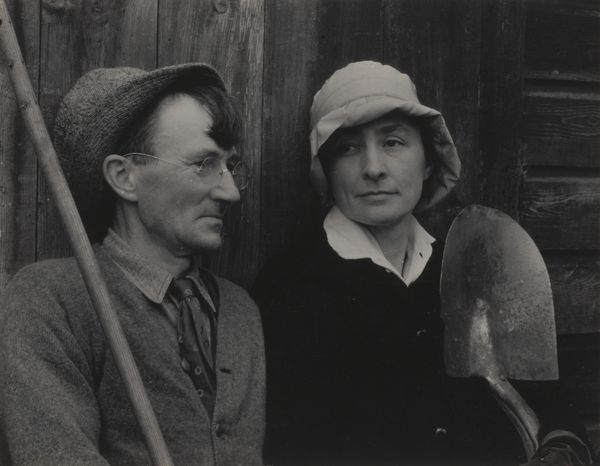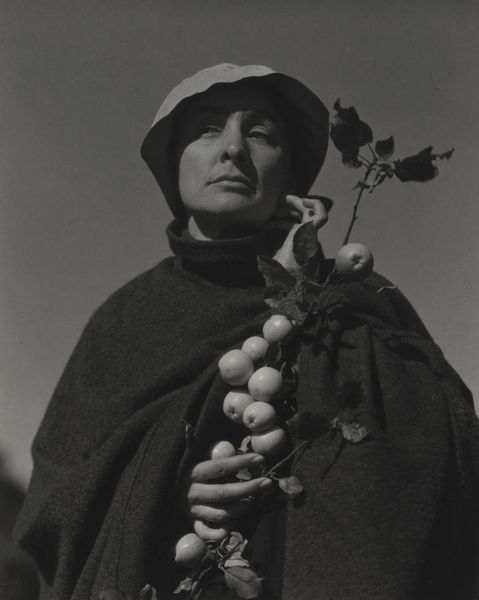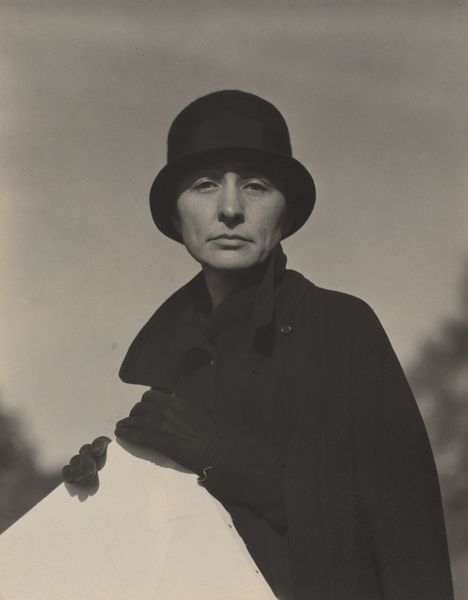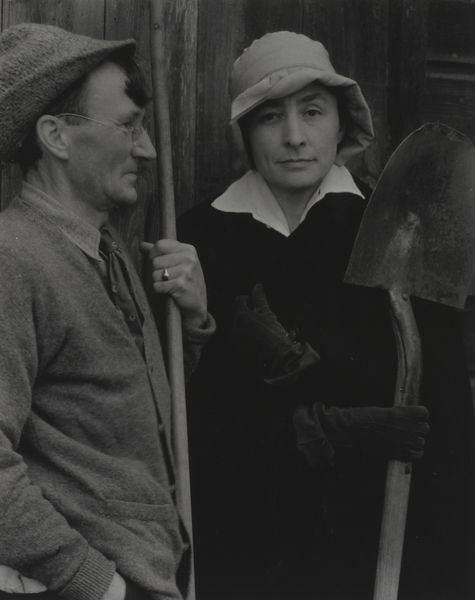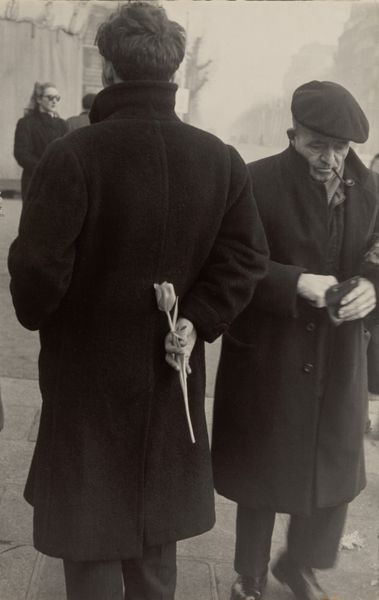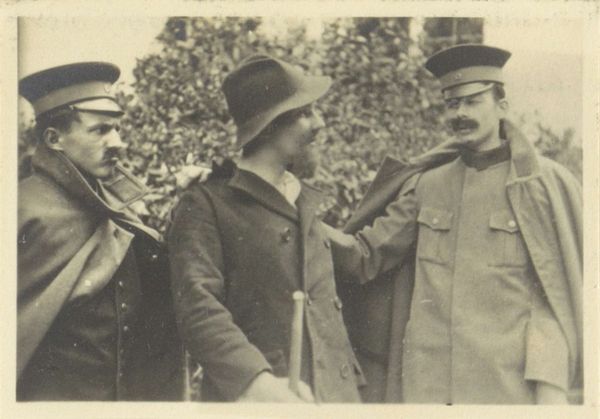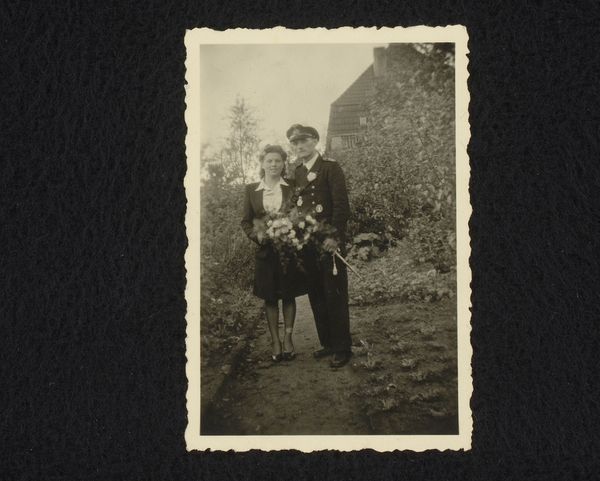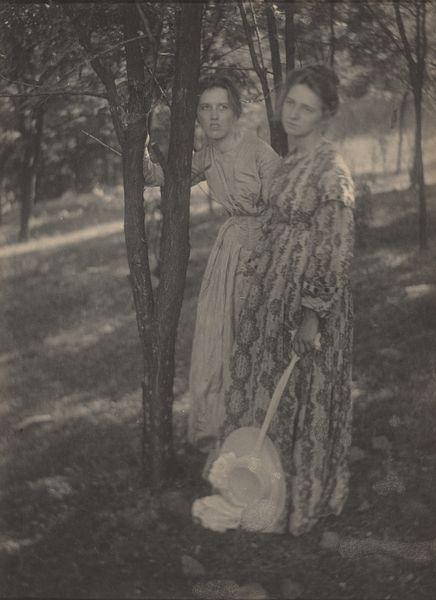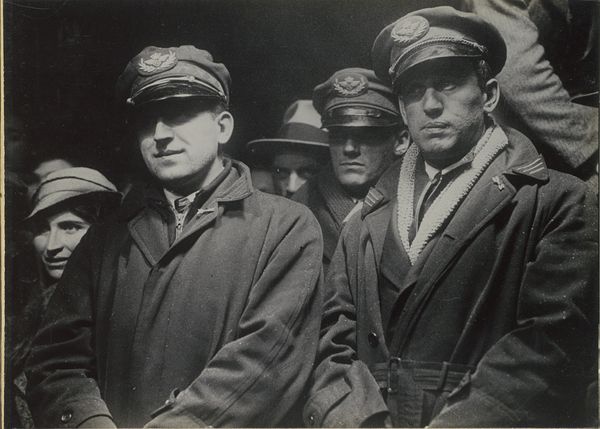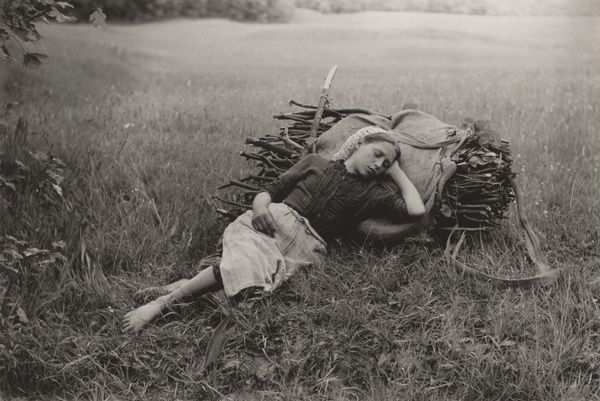
#
black and white photography
#
portrait image
#
black and white format
#
b w
#
black and white theme
#
black and white
#
computer generated
#
monochrome photography
#
monochrome
#
front view
Dimensions: sheet (trimmed to image): 11.3 x 9 cm (4 7/16 x 3 9/16 in.) mount: 34.2 x 27.5 cm (13 7/16 x 10 13/16 in.)
Copyright: National Gallery of Art: CC0 1.0
Curator: Ah, this is a striking image—Alfred Stieglitz's photograph, “Georgia O'Keeffe and Rebecca Strand,” dating from around 1922 or 1923. Editor: Immediately, I'm struck by the gravity. The tight framing, the austere dress, even the somber palette seems determined to distill their presence into something elemental and enduring. Curator: Absolutely. Knowing Stieglitz, there’s a certain… inevitability to the way he uses shadow and light here. It's almost like he’s sculpting their personalities. I mean, look at how the hand resting on O’Keeffe’s shoulder seems both protective and… possessive? It is layered and ambiguous. Editor: Possessive feels like the right word. Thinking materially, those dark clothes feel less like adornment and more like a kind of social uniform. Like the weight of responsibility or unspoken rules. Also, look at their hands. The visible hand on the right has dirty fingernails, implying manual labor; what's the labor needed to allow artists to keep creating work? The berries seem like they came directly from a nearby bush, gathered probably by them directly. Curator: Interesting… manual labor... Or maybe even something to use in one's own work? It has this wonderful earth-mother undertone, doesn't it? Editor: Well, that is very fair, but to be able to reach "earth-mother," labor must occur to make art or expression feasible. It's so easy to focus on the art maker when material circumstances make that artwork possible. How long did it take them to get ready, what was around that affected the setting, how are those clothes and where do they come from, how do they feel to the people wearing them? And then of course the cost. Curator: You bring it down to earth, as always. I will confess that to me it feels different from how, say, he photographed his flowers and how that was such an evocative topic at that time period. These were also material that could've been just purchased at a local flower shop or were simply found and collected as free materials! But here, there is a stoic resolve... A connection that goes beyond appearances... almost like Stieglitz tried to reveal their bond. It resonates deeper somehow. It resonates even with me now. Editor: Indeed. We’ve circled around it: the photo reveals how those complex emotional landscapes become deeply entwined with the labor, literally or figuratively, inherent in creation. So how do these complexities, these quiet dramas, still speak to us across time through a lens so rooted in materiality? I like that thought as we finish this.
Comments
No comments
Be the first to comment and join the conversation on the ultimate creative platform.
